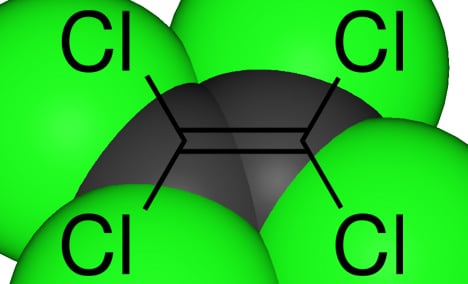Tetrachloroethylene. Perchloroethylene. Perc.
No matter how many syllables you break this cleaning compound down to, it’s still a type A2 carcinogen. If you strip away the A2 designation, this just means it’s a suspected human carcinogen.
According to Wikipedia, “This category is used when there is limited evidence of carcinogenicity in humans and sufficient evidence of carcinogenicity in experimental animals. In some cases, an agent (mixture) may be classified in this category when there is inadequate evidence of carcinogenicity in humans and sufficient evidence of carcinogenicity in experimental animals and strong evidence that the carcinogenesis is mediated by a mechanism that also operates in humans. Exceptionally, an agent, mixture or exposure circumstance may be classified in this category solely on the basis of limited evidence of carcinogenicity in humans.”
Whatever. We’d made our decision to become Non-Toxic Dry Cleaners (or Wet Cleaners) around the point where we read “limited evidence of carcinogenicity in humans”.
So why use Perc anyways? We know this stuff is bad.
For one reason, it works. According to Wikipedia, Perc “is an excellent solvent for organic materials. Otherwise it is volatile, highly stable, and nonflammable. For these reasons, it is widely used in dry cleaning. Usually as a mixture with other chlorocarbons, it is also used to degrease metal parts in the automotive and other metalworking industries. It appears in a few consumer products including paint strippers and spot removers.”
Need a second reason to use this stuff? It’s cheap. Which makes it appealing for the dry cleaning industry.
In a recent article it’s stated, “It’s effective and inexpensive, which is why 95% of dry cleaners in Europe use it every day.”
The result? You combine effective AND cheap and suddenly every dry cleaner in the last 50 years sees dollar signs (while conveniently ignoring the Type A2 carcinogen classification).
We can’t afford to ignore this any longer.
Governments around the world are taking a hard look at chemicals like Perc. Recently the French government has introduced a new law banning the use of Perc at dry cleaning facilities that are close to occupied buildings. The full ban comes into effect in 2020. To this, we say Bravo! We’re already well ahead of the curve when it comes to minimizing and eliminating the use of Perc in our facilities. It’s healthier for everyone and everything involved.
And to our counterparts within the industry, we encourage them to do the same. This a problem we can’t afford to ignore any longer. Let’s all do our part to reduce the use of this harmful chemical within our facilities!



Leave a Reply